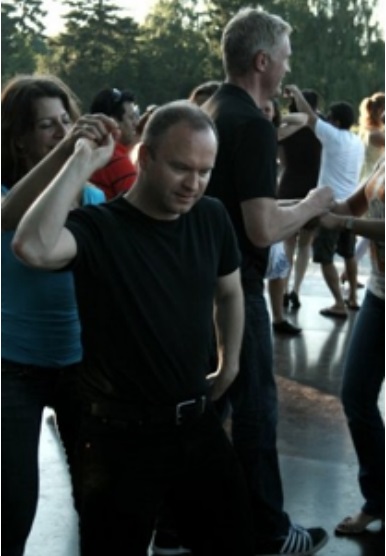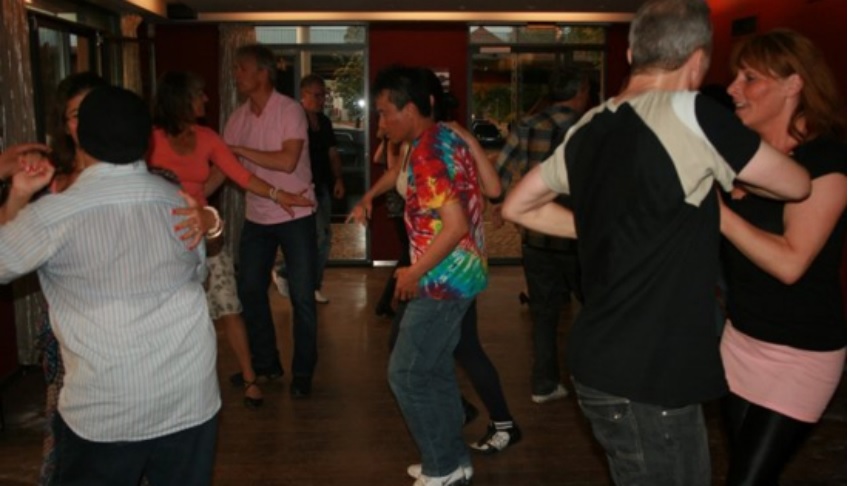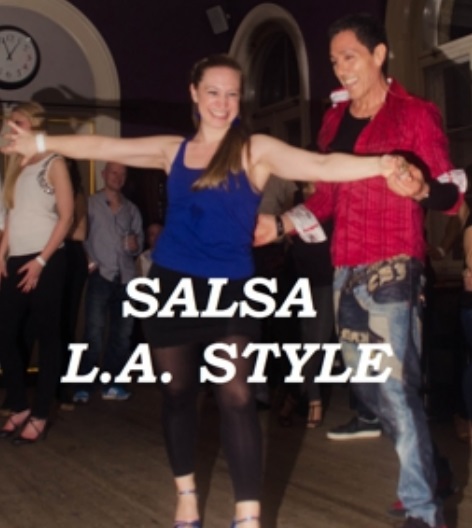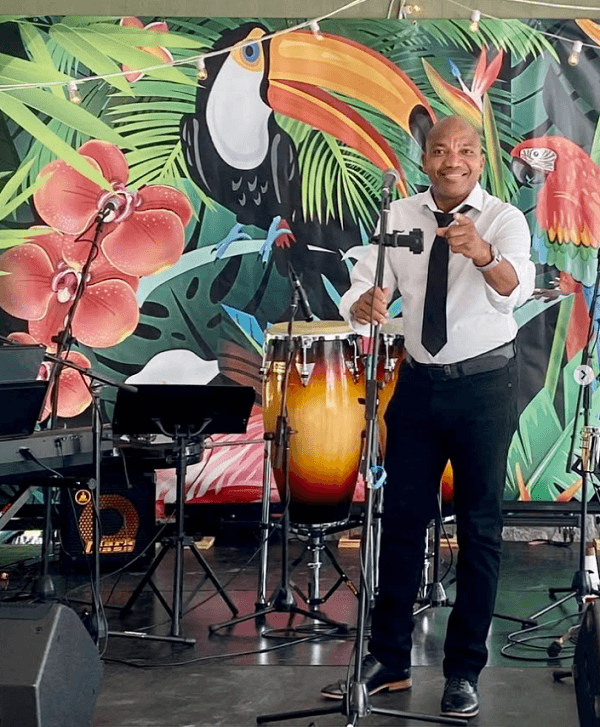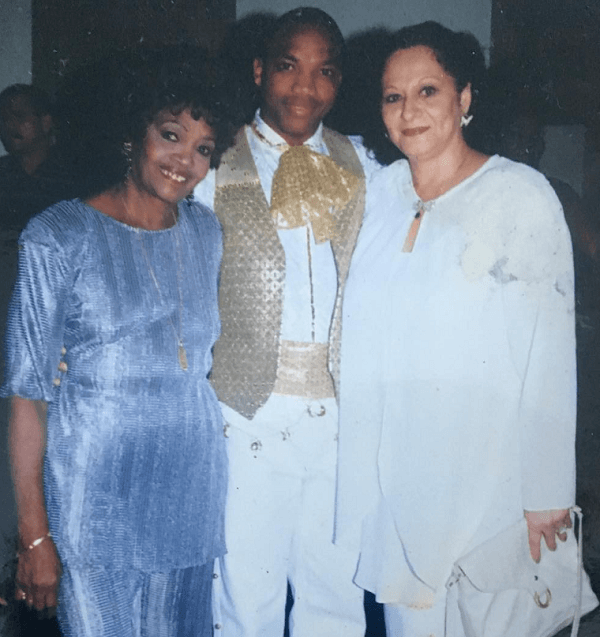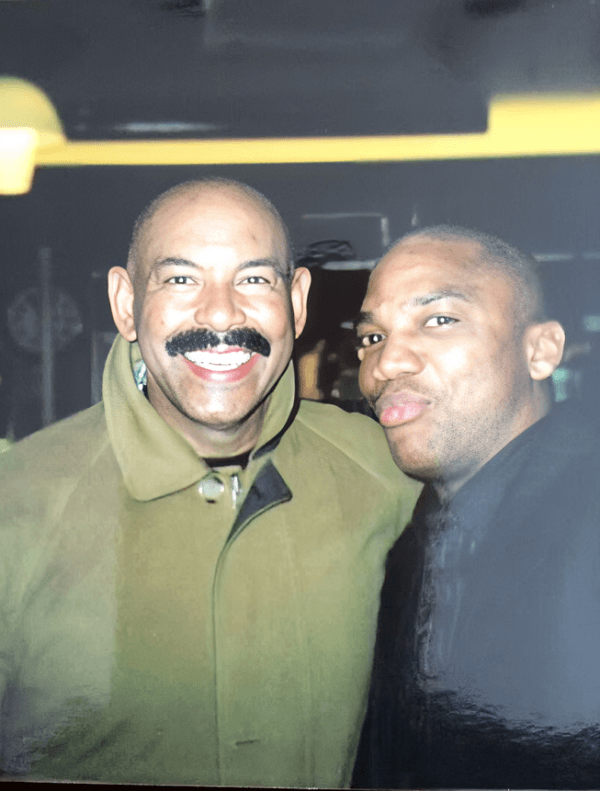With a full tank, Transition by Tito Rodriguez, Jr.
Bella Martinez, International Salsa Magazine by the hand of www.SalsaGoogle.com presents and highly recommends this formidable and exquisite production of Tito Rodriguez Jr. The firstborn of the unforgettable Pablo “Tito” Rodriguez.
Long live music! Repeat after me: “Long live the musicians so they can keep making it”. And I add: “Long live SALSA”.
As soon as I got my hands on it I listened to it, many times. Not that I needed an explanation, but I could not stop listening to it and go off to take care of my duties.
So much so that I had to send the radio station of the Puerto Rican salsa singer on vacation for a few days until I finished writing the note that had chosen to write itself. The CD cover – showing the photo of Tito Rodriguez, Jr. settled on my desk for several weeks as if it belonged to the surface in front of which I sit every day. Until one fine day I said to myself: Today I hope to be able to understand the instrumental pairing of everything that happens in this piece.
Here I go…

In the first cut (Bailando con la más fea) there were several bars after the first minute, that transported me to my days of partying in New York during the bravo launch of that orchestra that I haven’t heard for a long time.
Of course, while that orchestra sounded bigger than it was, this one I’m examining today – Tito Rodriguez, Jr.’s – sounds bigger than it is and on steroids; among other reasons because the baritone enhances the personality of this serious sounding arrangement, albeit hand in hand with a jocular lyric.
During the second theme (El vive bien) we experience a very Cuban theme of those that sandungueando the waists of those who follow the leather beats to’ fuete.
Shortly before entering the third minute, the interplay of saxophones and twists in which the baritone and bongo play suggest to me that this song shares the flavorfulness of the pregón that says “Salsa ahí na’ma’ como me gusta a mí…” from one of the tracks on Gilberto Santa Rosa’s production Colegas (2020). In fact, Gilberto collaborates in this production, specifically in the song Volver.
In the third cut (Ándate nena), the trumpet solo stands out within an arrangement for large orchestra and allows the performance to be sprinkled with conga, marking the nostalgia of the memory of those geniuses that the traditional big bands left us as a legacy. The saxophones sound like those of the Palladium orchestras.
The 4th track (Volver) is an arrangement where the influence of Bobby Valentín’s inventions is evident. The track starts like the romantic arrangements of the 1990’s, although with a heavy and dominant piano, prior to the alto saxophone playing that opens the way for the rest of the saxophones in perfect synchrony with the conga, timbal and bongo. This cut features Gilberto Santa Rosa, although the song didn’t need Santa Rosa to shine.
Tito Rodriguez, Jr. gave way to the most prolific salsa singer in commercial salsa to perform a song that was already the polished diamond of this collection.

I found it to be a classic big band arrangement with an avant-garde touch where the saxophones give way to a touch of a musical arrangement that wants to be a sonorous orchestra. However, the perfection of the thing doesn’t let the sonorous touch tuck in the modern big band concept. Well, I understand myself. “Afinca y echa pa’ lante…” said Santa Rosa.
In the fifth track (Con el tanque lleno) the orchestra starts off powerful in sound and playfulness. The song is about a “convertible, colorado y con el tanque lleno”. The pregón reads: “Soy soltero y con el tranque lleno” (I’m single and with a full tank). I don’t think you will be surprised when I confess that this is my favorite song in this collection. The lyrics are funny, but the arrangement is a smashing one.
The conga’s correspondence with the melodic trombone solo by Alex Zapata’s blows sets the stage for a masterful closing by the saxophone ensemble under the leadership of Ismael Vergara’s baritone.
The sixth track (No vale la pena) is evidence of the chameleonic capacity of Sammy Gonzalez, Jr.’s voice, which can be used to proclaim, to sound, to become the most romantic rogativo in the middle of a heavy song, all within a romantic lyric full of feeling. Well, rarely does a man play the “victim” of a sentimental breakup.
This is one of those few times, a situation that makes the pregones both jocular and nostalgic at the same time. The contradiction of suffering and laughing is also visited at the end of the mambo, which makes the theme one of general interest in addition to the musical interest it awakens.
The seventh track (Pa ti morena) is a very brave Cuban son. I don’t know if this son is played in that unlikely combination of the style of Tito Puente, Machito and Tito Rodriguez knowingly or if it was pure chance. I felt like I was reaching for heaven while listening to Sammy Gonzalez, Jr.’s vocal performance when the alto saxophone solo brought me back to reality.
The beginning of cut #8 (Para los bailadores) marks the change of tempo to an aggressive one where the bongo is the one telling where the baritone is going. When the vocalist suggests to Tito Rodriguez, Jr. to enter the mambo with an anticipatory “y nos fuimos”, no one doubts the greatness of the orchestra’s sound.
The timbal solo by Tito Rodríguez, Jr. declines when the performer requests “mambo otra vez”. It is in this track that the distinctive sound of this orchestra is most noticeable, one inspired by the traditional big bands, although influenced by the advanced currents. In short, this is real salsa and it is salsa to enjoy. As promised in the lyrics, this song brings to the arena a very cool rhythm that is not to be confused with charanga.
After I finished writing this note, having already listened to the complete production, I was tempted to ask Tito for an audience and ask him “a couple of questions” according to me. That brief call went on and on and I asked him everything I could, taking advantage of the nobility of the timbalero heir to the musicality and name of one of our greatest musical glories….
During the “cañona” that I wanted to call an organic interview, Tito confirmed that Transición is his fourth album and the first to be titled in Spanish. Let’s go well, Tito.
This album was preceded by Curious? (1978), which featured José Alberto “El Canario” and Rubén Blades; Eclipse (1995) and The Big Three Palladium Orchestra live at the Blue Note (2004).
Why the title Transición? I’ll tell you about it next time. Obviously, Tito deserves another chapter in my salsa journey. Talk to you soon and I’ll tell you about his 2009 adventure when he was in Puerto Rico fulfilling one of his musical dreams.
Tito Rodríguez, Jr. Transición
By: Bella Martinez “La Escritora Irreverente de La Salsa”
Puerto Rico








